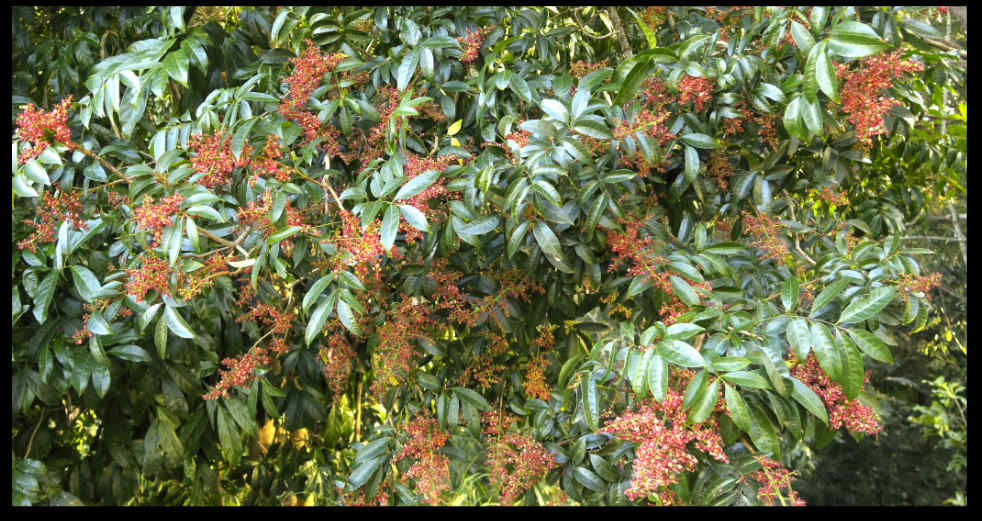Rhodosphaera rhodanthema.
The trees are mainly seen around 10 m high but they can be 20 to 25 m.
The trunk is usually cylindrical and there may be more than one.
There are short buttress roots and the crown is rounded.
The ends of small twigs and branchlets are brown due to the many short reddish-brown hairs.
Small trunks and older branches have prominent dark brown nodules (lenticels).
Older trunks have grey or brown fissured bark.
The once divided (pinnate) leaves are alternately arranged mainly at the branch ends.
The petioles, up to 8 cm long have a swollen base and very short pale hairs.
The 10 to 20 cm long leaves have 2 to 6 pairs of leaflets and a terminal one.
The midrib may have slight wings down the sides.
The opposite to sub-opposite leaflets are a shiny yellow green then a dark green with a paler lower surface.
The elliptic to lanceolate leaflets are on a stalk (petiolule) 3 to 5 mm long but the termianl one may be longer.
The leaflet blades are up to 10 cm long and 2 cm wide with a blunt pointed tip.
The mid vein may be curved with one side of the blade being narrower leading to the leaflet base being asymmetric.
The only hairs are the brown ones around the domatia in the vein axils along the midrib on the lower surface.
Domatia are small pits partly closed by a flap of tissue or hairs.
Terminal and axillary inflorescences are much branched panicles up to 20 cm long.
There may be short hairs on the midrib and on the branches.
Male and female flowers are on stalks (pedicels) a few mms long with small bracts.
There are 5 deep red sepals 2 mm long with hairs on the edge.
The 5, 3 mm long white pink to red petals are oblong with a narrow base.
The petals curve back and they may have hairs on the edge.
There is a yellow saucer-shaped nectiferous disc with 10 lobes around the edge.
Male flowers have 10 stamens with 1 mm long filaments that alternate with the nectary lobes.
The 2 mm long dorsi-fixed anthers open inwards through longitudinal slits.
There is no ovary or a tiny aborted one.
Female flowers have a 1 mm high superior ovary sitting on the centre of the nectary disc.
The ovary has 1 locule with a single ovule on a long stalk or funiculus.
There are 3 separate styles and stigmas.
Instead of stamens there are 10 infertile staminodes around 1 mm long.
The 1 cm wide fruit are drupes with one flattened seed in a hard coat.
The fruit mature from green to red then dark brown.
J.F.


